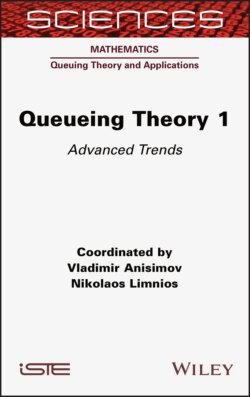Читать книгу Queueing Theory 1 - Nikolaos Limnios - Страница 16
1.2.1.2. Consider E(X(b))
ОглавлениеNext let us consider E(X(b)). By differentiating E(X(b)) w.r.t. b, wehave
Define
For a stable system, we know that b–f(b) and 1–f(b) are always positive, hence both A(b) and B(b) are always positive if .
We thus have that the behavior of E(X(b)) depends entirely on f’(b), A(b) and B(b) and whether or not. E(X(b)) depends on the sign and values of the first three parameters, and the value of the fourth one.
PROPOSITION 1.3.– For a stable system,
1) if then E(X(b)) will be decreasing as b increases;
2) if then E(X(b)) will be increasing as b increases.
The first part of proposition 1.3 is straightforward in that an increase in the service rate reduces the arrival, thereby reducing the traffic intensity and decreasing the expected number in the system. However, an increase to the service rate could also lead to an increase in the mean number in the system as observed in the second part of the proposition, which can be explained by the rate at which the arrival probability increases compared to the service completion probability (b), especially if that rate is high.
